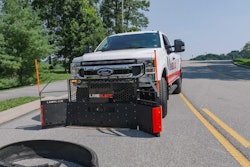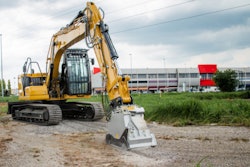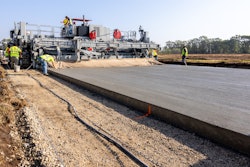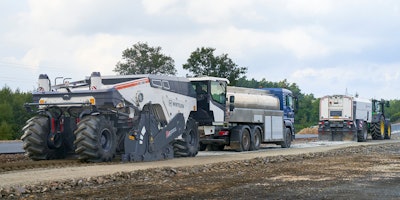
Wirtgen’s new WRC 240i Rock Crusher can grind up stony ground and add cement and water in the same pass for such tasks as laying road base.
The WRC is part of Wirtgen’s wheeled soil stabilizer lineup. Along with stone from the jobsite, the crusher can handle the crushing, processing and homogenization of hard core, concrete fragments and cobblestones, the company says.
“The main task of the WRC is the granulation and mixing of a variety of soils, courses and layers to produce a homogeneous final product in a continuous process,” Wirtgen says. “As opposed to the removal and replacement of material, the processes here are characterized by shorter construction times, conservation of resources and lower CO2 emissions.”
Operators can set the desired grain size of the crushed material with the WRC’s vertically stacked, hydraulically adjustable classifying screens. The Rock Crusher can produce 600 tons an hour of homogenous mix with its working width of 91 inches and 10-inch working depth.
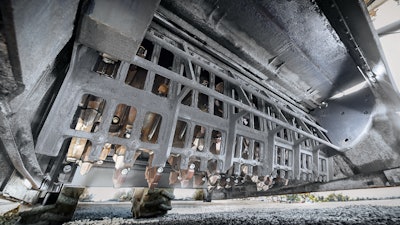 Hydraulically adjustable classifying screen on Wirtgen WRC 240i.Wirtgen
Hydraulically adjustable classifying screen on Wirtgen WRC 240i.Wirtgen
For stabilizing soil, pre-spread binding agents such as lime or cement are mixed into the existing soil where it is transformed into high-grade construction material and deposited evenly behind the machine, according to Wirtgen.
Features on the WRC 240i include:
- The crushing and mixing rotor’s toolholders are developed especially for crushing applications on stony ground. The tools are fitted with carbide cutting edges, and the holder bases are protected by wear-resistant, high-tensile steel.
- The rotor housing and entire mixing chamber are lined with replaceable, abrasion-resistant wearing plates made from high-tensile steel for longer service life and overall stability of the housing.
- Several setting options are available to achieve desired grain size and consistent, uniform distribution. That includes nine rotor speeds, a variable crushing stage, exchangeable screens with a range of clear mesh sizes and adjustable distance from the rotor, adjustable rotor plate pressure, and the machine advance rate.
- The satellite-based AutoTrac system automatically steers the WRC “accurately within tolerances of a few centimeters,” Wirtgen says.
- The Wirtgen Performance Tracker (WPT) monitors and records the Rock Crusher’s location and working data for job analysis and documentation.

